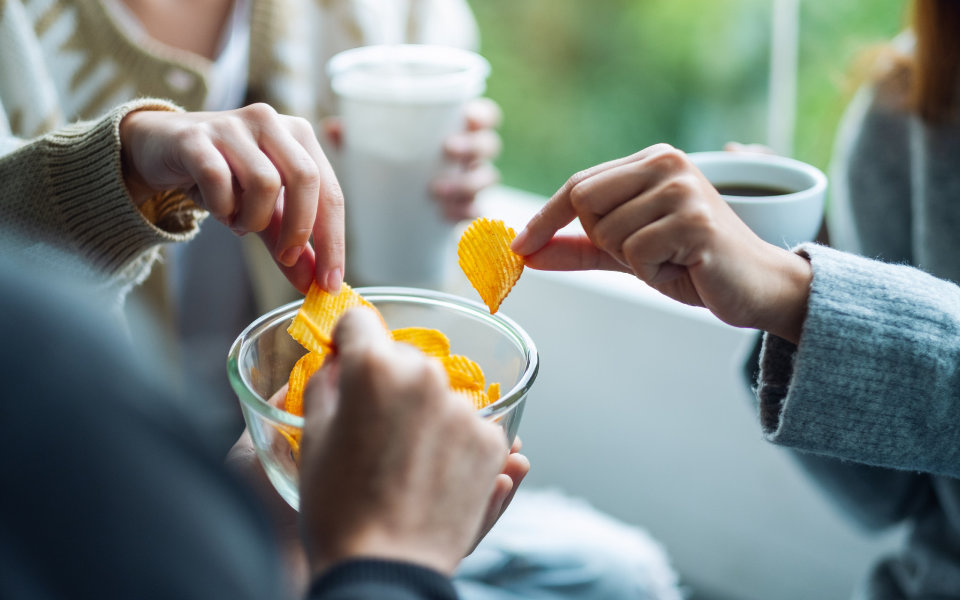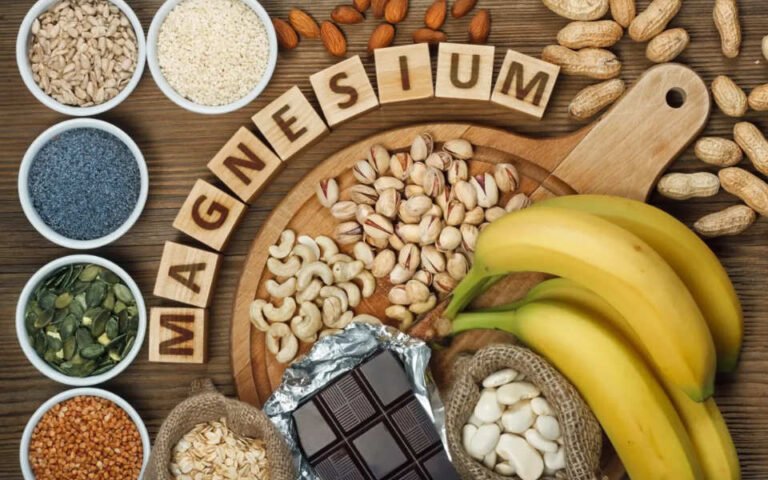Diabetes has become a global health crisis, with its prevalence rising dramatically over the past few decades. According to the International Diabetes Federation (IDF), an estimated 537 million adults were living with diabetes in 2021, representing approximately 1 in 10 adults worldwide. This number is projected to increase to 643 million by 2030 and a staggering 783 million by 2045. The rapid growth of diabetes cases is not limited to any specific region, with significant increases expected across all continents.
As the diabetes epidemic continues to expand, researchers and health professionals have been investigating various contributing factors. One area of increasing concern is the role of processed foods, specifically ultra-processed foods (UPFs), in developing diabetes.
Ultra-processed foods are industrially formulated edible substances derived from natural food or synthesised from other organic compounds. These products are made to be highly profitable, convenient, and hyper-palatable, often through the use of food additives such as preservatives, colourings, and flavourings. UPFs have become ubiquitous in modern diets, especially in developed countries, where they can constitute over 50% of total caloric intake in nations like the United Kingdom and the United States.
The concept of ultra-processed foods gained prominence in 2009 when Brazilian researchers introduced it as part of the NOVA food classification system. This system categorises foods based on the extent and purpose of processing, with UPFs representing the highest level of industrial processing. Since then, the study of UPFs and their potential health impacts has become an increasingly important area of nutrition research, with growing evidence suggesting links between UPF consumption and various health issues, including diabetes.
As we explore the connection between processed foods and diabetes, it’s crucial to understand the definitions, characteristics, and potential mechanisms by which these foods may influence metabolic health. This will help show the complex interplay between our modern food environment and the rising of diabetes worldwide.
Understanding Processed Foods
Processed foods are products that have undergone some form of alteration from their natural state for safety or convenience reasons. The extent of processing can vary widely, ranging from minimal changes to significant modifications that alter the food’s original form and nutritional composition [1].
1. The NOVA Classification System
The NOVA classification system, developed by Brazilian researchers in 2009, has become the most widely used framework for categorising foods based on the extent and purpose of processing [2]. This system divides foods into four distinct groups:
a) Unprocessed or Minimally Processed Foods (Group 1)
These are natural foods that have undergone little or no processing. Examples include:
- Fresh fruits and vegetables
- Dried fruits without added sugar
- Grains and legumes
- Meat, poultry, fish, and eggs
- Plain milk and unsweetened yoghurt
- Nuts and seeds
- Herbs and spices
- Water, tea, and coffee [3]
b) Processed Culinary Ingredients (Group 2)
These are substances extracted from Group 1 foods or nature, used for seasoning and cooking. Examples include:
- Salt
- Sugar and molasses
- Honey
- Vegetable oils
- Butter and lard
- Starches
- Vinegar
c) Processed Foods (Group 3)
These are relatively simple products made by adding Group 2 ingredients to Group 1 foods. Examples include:
- Canned vegetables, fruits, and legumes
- Fruits in syrup
- Salted or sugared nuts and seeds
- Salted, cured, or smoked meats
- Canned fish
- Artisanal breads and cheeses
d) Ultra-Processed Foods (UPFs) (Group 4)
UPFs are industrial formulations made mostly from substances extracted from foods or derived from food constituents, with little or no whole foods. They often contain additives to enhance flavour, texture, and shelf life [4].
2. Common Examples of UPFs
Ultra-processed foods are ubiquitous in modern diets and include:
- Carbonated soft drinks and fruit drinks
- Sweetened yogurts
- Packaged snacks (sweet and savoury)
- Candies and cake mixes
- Mass-produced breads and buns
- Margarine and spreads
- Breakfast cereals
- Energy bars and drinks
- Instant soups and noodles
- Ready-to-heat meals
- Reconstituted meat products (e.g., nuggets, fish sticks)
- Infant formulas
These foods are made to be convenient, hyper-palatable, and have a long shelf life. They often contain ingredients not typically used in home cooking, such as high-fructose corn syrup, hydrogenated oils, and various additives like emulsifiers, stabilisers, and artificial flavours.
Understanding the NOVA classification system and recognising ultra-processed foods is crucial for making informed dietary choices and assessing the potential health impacts of different food products.
The Link Between Ultra-Processed Foods and Diabetes

The link between ultra-processed foods (UPFs) and diabetes has been the subject of increasing research in recent years, with several studies and meta-analyses providing compelling evidence of a significant association. Here’s an overview of the key findings:
1. Recent Research Findings
Multiple large-scale prospective cohort studies have consistently shown a positive association between UPF consumption and the risk of developing type 2 diabetes (T2D). A systematic review and meta-analysis published in 2021 examined 18 studies involving nearly 1.1 million individuals [5]. Of these studies, 72% demonstrated a positive association between UPF consumption and diabetes risk.
In the United States, a comprehensive study analysing data from three large cohorts (the Nurses’ Health Study, Nurses’ Health Study II, and Health Professional Follow-Up Study) found a strong link between UPF intake and T2D risk [6]. This study, which included over 198,000 participants, provided robust evidence for the association in the U.S. population, where UPF consumption is particularly high.
2. Meta-Analysis Results
The meta-analysis results provide strong evidence for the increased risk of T2D associated with UPF consumption:
- Moderate UPF intake was associated with a 12% increased risk of diabetes (Relative Risk: 1.12; 95% CI: 1.06-1.17).
- High UPF intake was linked to a 31% increased risk of diabetes (Relative Risk: 1.31; 95% CI: 1.21-1.42).
- A more recent meta-analysis, which included 415,554 participants and 21,932 T2D cases, found that for every 10% increase in UPF consumption, there was a 12% higher risk of developing T2D (95% CI: 10%-13%).
These findings were consistent across different populations and study designs, providing high-quality evidence for the association between UPF consumption and T2D risk.
3. Dose-Response Relationship
The research indicates a clear dose-response relationship between UPF intake and diabetes risk:
- In the U.S. cohort study, comparing the highest quintile of UPF intake to the lowest, there was a 46% increased risk of T2D (Hazard Ratio: 1.46; 95% CI: 1.39-1.54).
- The meta-analysis revealed that every 150 g/day increments in UPF consumption resulted in a 5% increase in diabetes risk (Relative Risk: 1.05; 95% CI: 1.03-1.07).
- A Brazilian cohort study found that participants in the highest quartile of UPF consumption (≥566 g/day) had a 24% higher risk of developing T2D compared to those in the lowest quartile (<236 g/day).
This dose-response relationship suggests that even small reductions in UPF consumption could have substantial benefits for diabetes prevention.
It’s important to note that while the overall association between total UPF consumption and T2D risk is clear, some UPF subgroups showed different associations. For example, in the U.S. cohorts, while refined bread, sweetened beverages, and processed meats were associated with higher T2D risk, other UPF subgroups like cereals, whole-grain bread, and yoghurt were associated with lower risk [7].
These findings underscore the complexity of the relationship between UPFs and diabetes risk, highlighting the need for nuanced dietary recommendations and further research into the components and processing methods that may contribute to increased diabetes risk.
Nutritional Profile of Ultra-Processed Foods
Ultra-processed foods (UPFs) have a distinct nutritional profile that often contrasts sharply with less processed alternatives. Here’s an overview of their key characteristics and a comparison with less processed foods:
1. Characteristics of UPFs
a) High in Added Sugars
UPFs are often loaded with added sugars, contributing to their palatability and long shelf life [8]. These added sugars can come in various forms, including high-fructose corn syrup, white sugar, and other refined sweeteners. A study found that UPFs account for nearly 90% of the added sugar intake in the average American diet [9].
b) High in Unhealthy Fats
Many UPFs are rich in unhealthy fats, specifically trans fats. These are often added to improve texture, increase shelf life, and enhance flavour. Processed meats, packaged snacks, and baked goods are common sources of these unhealthy fats.
c) High in Sodium
UPFs typically contain high levels of sodium, used as a preservative and flavour enhancer. Excessive sodium intake is associated with an increased risk of hypertension and cardiovascular diseases.
d) Low in Fibre
The processing of foods often removes or reduces fibre content. Fibre is crucial for digestive health, blood sugar regulation, and feeling of fullness.
e) Low in Protein
While some UPFs may be fortified with protein, many are low in high-quality protein compared to whole-food alternatives.
f) Low in Essential Nutrients
UPFs are often depleted of essential vitamins and minerals during processing. Although some nutrients may be added back (fortification), the overall nutrition quality is typically lower than whole foods.
2. UPFs vs. Less Processed Alternatives
A comprehensive analysis of the US diet revealed significant nutrition differences between UPFs and less processed foods:
- Added Sugars: UPFs contained significantly more added sugars (21.1% of calories) compared to less processed foods (2.4% of calories).
- Sodium: UPFs contained 1.5 times more sodium than less processed foods.
- Fibre: UPFs had lower fibre content (2.8g per 1000 calories) compared to less processed foods (4.2g per 1000 calories).
- Protein: UPFs contained less protein (9.4% of calories) than less processed foods (13.2% of calories).
- Potassium: UPFs had significantly lower potassium content (1.8g per 1000 calories) compared to less processed foods (2.5g per 1000 calories).
- Vitamins and Minerals: UPFs generally contained lower amounts of vitamins A, C, D, and E, as well as zinc, potassium, phosphorus, magnesium, and calcium compared to less processed alternatives.
These nutrition differences highlight the potential health implications of a diet high in ultra-processed foods. The lower nutrient density and higher content of potentially harmful components in UPFs contribute to their link with various health risks, including obesity, type 2 diabetes, and cardiovascular diseases.
It’s important to note that not all processed foods are equal, and some may retain beneficial nutrients. However, the overall trend shows that UPFs generally have a less favourable nutritional profile compared to less processed or whole-food alternatives.
How Ultra-Processed Foods are Linked to Diabetes

The mechanisms linking ultra-processed foods (UPFs) to diabetes risk are multifaceted and involve several interconnected pathways. Here’s an overview of the key mechanisms:
1. Impact on Blood Sugar Levels and Insulin Resistance
UPFs often have a high glycemic index and load, leading to rapid spikes in blood sugar levels. This can contribute to insulin resistance over time:
- High sugar content: Many UPFs contain added sugars, which can cause frequent blood glucose spikes.
- Refined carbohydrates: UPFs are often made with refined grains, which are quickly digested and absorbed, leading to rapid blood sugar increases.
- Low fibre content: The lack of fibre in many UPFs means there’s little to slow down the absorption of sugars, exacerbating blood glucose fluctuations.
These factors can lead to increased insulin demand and, eventually, insulin resistance, a key factor in developing type 2 diabetes.
2. Contributing to Weight Gain and Obesity
UPFs are strongly associated with weight gain and obesity, which are major risk factors for type 2 diabetes:
- High-calorie density: UPFs are often energy-dense but nutrient-poor, making it easy to overconsume calories.
- Hyper palatability: The combination of sugars, fats, and salt in UPFs can override natural satiety signals, leading to overconsumption.
- Faster eating: UPFs often require less chewing, leading to faster eating and potentially higher calorie intake before feeling full.
- Hormonal changes: UPF consumption has been associated with changes in hunger-related hormones, potentially increasing appetite and food intake.
A study found that diets rich in UPFs were associated with a 79% increased risk for obesity (HR 1.79; 95% CI 1.06─3.03) [10].
3. Potential Effects on Gut Microbiome
Emerging research suggests that UPFs may negatively impact the gut microbiome, which plays a crucial role in metabolism and insulin sensitivity:
- Low fibre content: UPFs are often low in fibre, which is essential for maintaining a healthy gut microbiome.
- Food additives: Some additives in UPFs may alter the composition and function of gut bacteria.
- Emulsifiers: Common in UPFs, these may disrupt the gut’s mucus barrier and alter microbial composition.
These changes in the gut microbiome can potentially lead to increased inflammation and metabolic disturbances, contributing to insulin resistance and diabetes risk.
4. Food Additives and Their Metabolic Effects
UPFs contain various additives that may have direct or indirect effects on metabolism:
- Artificial sweeteners: Some studies suggest these may alter glucose metabolism and gut microbiota.
- Emulsifiers: These may promote inflammation and metabolic syndrome in animal studies.
- Advanced glycation end products (AGEs): Formed during high-heat processing, AGEs may contribute to oxidative stress and inflammation.
- Endocrine disruptors: Some packaging materials in UPFs may contain chemicals that interfere with hormone function, potentially affecting metabolism.
While more research is needed to fully understand the impact of these additives, their presence in UPFs adds another layer of complexity to the link between UPF consumption and diabetes risk.
The mechanisms linking UPFs to diabetes risk are complex and interconnected, involving direct effects on blood sugar and insulin, indirect effects through weight gain and obesity, potential alterations to the gut microbiome, and various food additives with potential metabolic effects. These factors collectively contribute to the increased risk of type 2 diabetes associated with high UPF consumption.
Ultra-Processed Food Consumption Patterns
1. Global Trends in UPF Consumption
UPF consumption has been increasing dramatically worldwide in recent decades. However, there are significant differences between countries and regions:
- Highest consumption: The United States and the United Kingdom have the highest levels, with UPFs accounting for over 50% of total calorie intake [11].
- Moderate consumption: Canada (47.7% of energy intake), Australia (around 40%), and some Middle Eastern countries like Lebanon (36.5%) [12].
- Lower consumption: Brazil and other Latin American countries (around 20-25% of energy intake) [13].
- Lowest consumption: Italy has reported the lowest levels at about 10% of total calorie intake.
2. Differences Across other Populations
Several sociodemographic factors are associated with higher UPF consumption:
- Age: Younger people consume more UPFs than older adults [14].
- Gender: Men generally have higher UPF intake than women.
- Urban areas: Urban residents consume more UPFs compared to rural populations.
- Education: In some countries, lower education is associated with higher UPF intake, while the opposite is true in others.
- Socioeconomic status: Higher socioeconomic status is linked to greater UPF consumption in some developing countries.
Children and adolescents often have high UPF intake. For example, in the UK, 65% of calories eaten by school children came from UPFs like white bread, biscuits, carbonated drinks, crisps, and chips.
3. UPF Associated with Higher Diabetes Risk
While the research doesn’t specifically identify UPF categories linked to diabetes risk, some commonly consumed UPFs that contribute significantly to total energy intake include:
- Cookies, pastries, and sweet breads
- Packaged bread
- Fast foods
- Sugar-sweetened beverages
- Processed sweets
These food categories can account for nearly 25% of daily energy intake in diets with 50% of calories from UPFs, and up to half of total energy intake in populations consuming 70-75% of calories from UPFs.
It’s important to note that higher UPF consumption is associated with lower intake of unprocessed foods, particularly poultry, red meat, cereals, and fruits. This shift in dietary patterns may contribute to the increased risk of diabetes and other health issues associated with high UPF intake.
Beyond Total UPF Intake
1. UPF Consumption Patterns and Diabetes Risk:
1. Savory Snacks:
- Both warm and cold savoury snack UPF patterns were positively associated with the onset of type 2 diabetes risk.
- Processed meats, which often fall into the savoury snack category, showed a strong association with increased diabetes risk.
2. Sweet Snacks and Pastries:
- Interestingly, a sweet snack UPF pattern was negatively associated with the onset of type 2 diabetes.
- However, sweetened beverages, which could be considered in this category, were strongly associated with increased diabetes risk.
3. Traditional Cuisine:
- A traditional Dutch cuisine UPF pattern showed no clear association with diabetes risk.
- This suggests that not all types of UPFs are necessarily detrimental to health, especially those that are part of traditional dietary patterns.
4. Other Specific UPF Types:
- Yogurt and dairy sweets were associated with a decreased risk of diabetes.
- The proportions of UPFs in beverages, sugary products, fats/sauces, and dairy products were more specifically associated with increased type 2 diabetes risk [15].
2. Why Specific UPF Types Matter:
The research highlights the importance of looking beyond total UPF intake when assessing diabetes risk:
- Heterogeneity of UPFs: The study from the Netherlands emphasised “the importance of considering the heterogeneity of UPF when studying its health effects, as associations with the offset of type 2 diabetes varied across different patterns of UPF consumption” [16].
- Variable Associations: Different UPF categories showed variable associations with diabetes risk, with some even showing protective effects (e.g., yoghurt and dairy sweets) [17].
- Nuanced Dietary Recommendations: Understanding these differences allows for more nuanced dietary recommendations. Not all UPFs may need to be avoided equally.
- Complex Relationship: The relationship between UPFs and diabetes risk is complex and cannot be fully captured by looking at total intake alone. Specific food categories and consumption patterns provide more detailed insights.
- Potential Mechanisms: Different UPF types may have different effects on metabolic health due to their specific nutritional profiles, additives, or processing methods [18].
While overall UPF consumption is generally associated with increased diabetes risk, the specific types and patterns of UPF consumption provide a more nuanced picture. This understanding can help develop more targeted dietary interventions and public health strategies to reduce diabetes risk.
Strategies for Reducing Ultra-Processed Food Consumption

Reducing ultra-processed food (UPF) consumption is an important step towards improving overall health and reducing the risk of diabetes. Here are some effective strategies:
1. Reading and Understanding Food Labels
Ingredient List:
- Look for products with short, recognisable ingredient lists.
- Avoid products with long lists of unfamiliar ingredients or chemical names.
Nutrition Facts Panel:
- Check for high added sugars, sodium, and unhealthy fats levels.
- Look for products higher in fibre and protein.
Front-of-Package Claims:
- Be cautious of health claims on packaging, as they can be misleading.
- Look for whole food ingredients rather than relying on marketing claims.
NOVA Classification:
- Some countries are considering adding NOVA classification to food labels.
- Familiarise yourself with this system to identify UPFs more easily.
2. Cooking Meals at Home Using Whole Ingredients
Meal Planning:
- Plan meals to avoid relying on convenience foods.
- Create a grocery list focused on whole, minimally processed ingredients.
Batch Cooking:
- Prepare larger quantities of meals and freeze portions for later use.
- This provides convenient, home-cooked alternatives to UPFs.
Simple Recipes:
- Start with easy recipes using whole ingredients.
- Gradually expand your cooking skills and recipe repertoire.
Involve Family Members:
- Make cooking a family activity to encourage healthier eating habits.
- Teach children about whole foods and cooking skills.
3. Choosing Minimally Processed Alternatives
Swap UPFs for Whole Foods:
- Replace sugary cereals with oatmeal and fresh fruit.
- Choose whole fruits instead of fruit juices or fruit-flavoured snacks.
Healthier Snack Options:
- Choose nuts, seeds, or fresh fruits instead of packaged snacks.
- Prepare homemade snacks like cut vegetables with hummus.
Beverages:
- Replace sugary drinks with water, unsweetened tea, or infused water.
- If choosing juices, choose 100% fruit juices in moderation.
Bread and Grains:
- Choose whole-grain bread and pasta over refined versions.
- Experiment with less processed grains like quinoa, brown rice, or barley.
4. Reduce UPF Intake Gradually
Set Realistic Goals:
- Start by reducing UPF consumption by 10-20% per week.
- Gradually increase the proportion of whole foods in your diet.
Identify and Target High-Consumption UPFs:
- Focus on reducing the UPFs you consume most frequently.
- Find healthier alternatives for these items first.
Practice the 80/20 Rule:
- Try 80% of your diet from whole, minimally processed foods.
- Allow 20% for occasional treats or convenience foods.
Mindful Eating:
- Pay attention to hunger cues and eat slowly.
- This can help reduce overall food intake, including UPFs.
Educate Yourself:
- Learn about the health impacts of UPFs and the benefits of whole foods.
- Use this knowledge as motivation for changing habits.
Create a Supportive Environment:
- Remove or reduce UPFs in your home and workplace.
- Surround yourself with healthier food options.
Track Progress:
- Keep a food diary to monitor your UPF intake.
- Celebrate small wins in reducing UPF consumption.
By implementing these strategies, you can gradually reduce your consumption of ultra-processed foods and shift towards a diet rich in whole, minimally processed foods. This transition can significantly contribute to better overall health and a reduced risk of diabetes and other chronic diseases.
Conclusion
The research on ultra-processed foods (UPFs) and diabetes risk has given several important findings:
- Strong Association: Multiple large-scale studies and meta-analyses have consistently shown a positive association between UPF consumption and the risk of developing type 2 diabetes (T2D).
- Dose-Response Relationship: There is a clear dose-response relationship, with higher UPF intake correlating with increased diabetes risk. Meta-analyses have shown that for every 10% increase in UPF consumption, there is a 12% higher risk of developing T2D.
- Nutritional Profile: UPFs are typically high in added sugars, unhealthy fats, and sodium while being low in fibre, protein, and essential nutrients. This unfavourable nutritional profile contributes to their negative health impacts.
- Multiple Mechanisms: UPFs may increase diabetes risk through various mechanisms, including impacts on blood sugar levels, insulin resistance, weight gain, altering the gut microbiome, and potential effects of food additives.
- Consumption Patterns: While overall UPF intake is associated with increased diabetes risk, different UPF categories show different associations. Some, like sweetened beverages and processed meats, show stronger links to diabetes risk than others.
- Global Trend: UPF consumption has been increasing worldwide, with significant changes across countries and populations, highlighting the global nature of this dietary shift and its potential health implications.
Given these findings, it is crucial to emphasise the importance of a balanced diet rich in minimally processed foods:
- Whole Foods Focus: A diet centred around whole, minimally processed foods provides essential nutrients, fibre, and beneficial compounds that support metabolic health.
- Reduced Health Risks: By reducing UPF intake and increasing consumption of whole foods, people can potentially lower their risk of developing type 2 diabetes and other chronic diseases.
- Improved Nutrient Density: Minimally processed foods typically offer higher nutrient density, providing more essential vitamins, minerals, and beneficial plant compounds per calorie.
- Better Blood Sugar Control: Whole foods, especially those rich in fibre, can help regulate blood sugar levels and improve insulin sensitivity.
- Weight Management: A diet based on whole foods can aid in weight management, a key factor in preventing diabetes.
- Long-term Health: Adopting a diet rich in minimally processed foods supports overall health and well-being beyond just diabetes prevention.
To address the growing concerns about UPFs and diabetes risk, action is needed at multiple levels:
- Educate yourself about UPFs and their potential health impacts.
- Gradually reduce UPF consumption by choosing whole-food alternatives.
- Learn to read food labels and make informed choices.
- Prioritise home cooking using whole ingredients.
By taking action at these multiple levels, you can work towards creating a food environment that supports better health outcomes and reduces the risk of type 2 diabetes and other chronic diseases associated with high UPF consumption.
Stay Informed & Inspired with Our Newsletter
Sign up for our newsletter to stay informed about the latest updates, episodes, helpful tips and strategies for diabetes management and holistic wellness.


